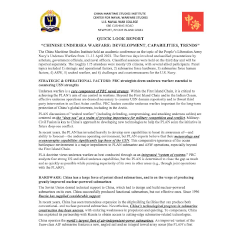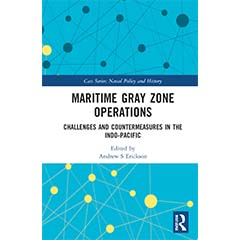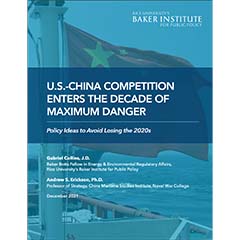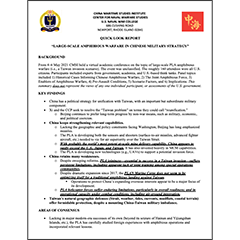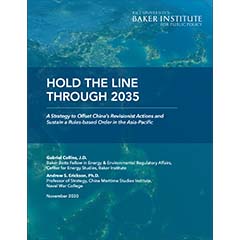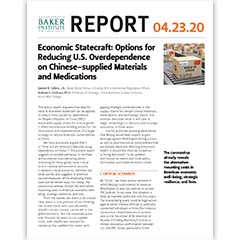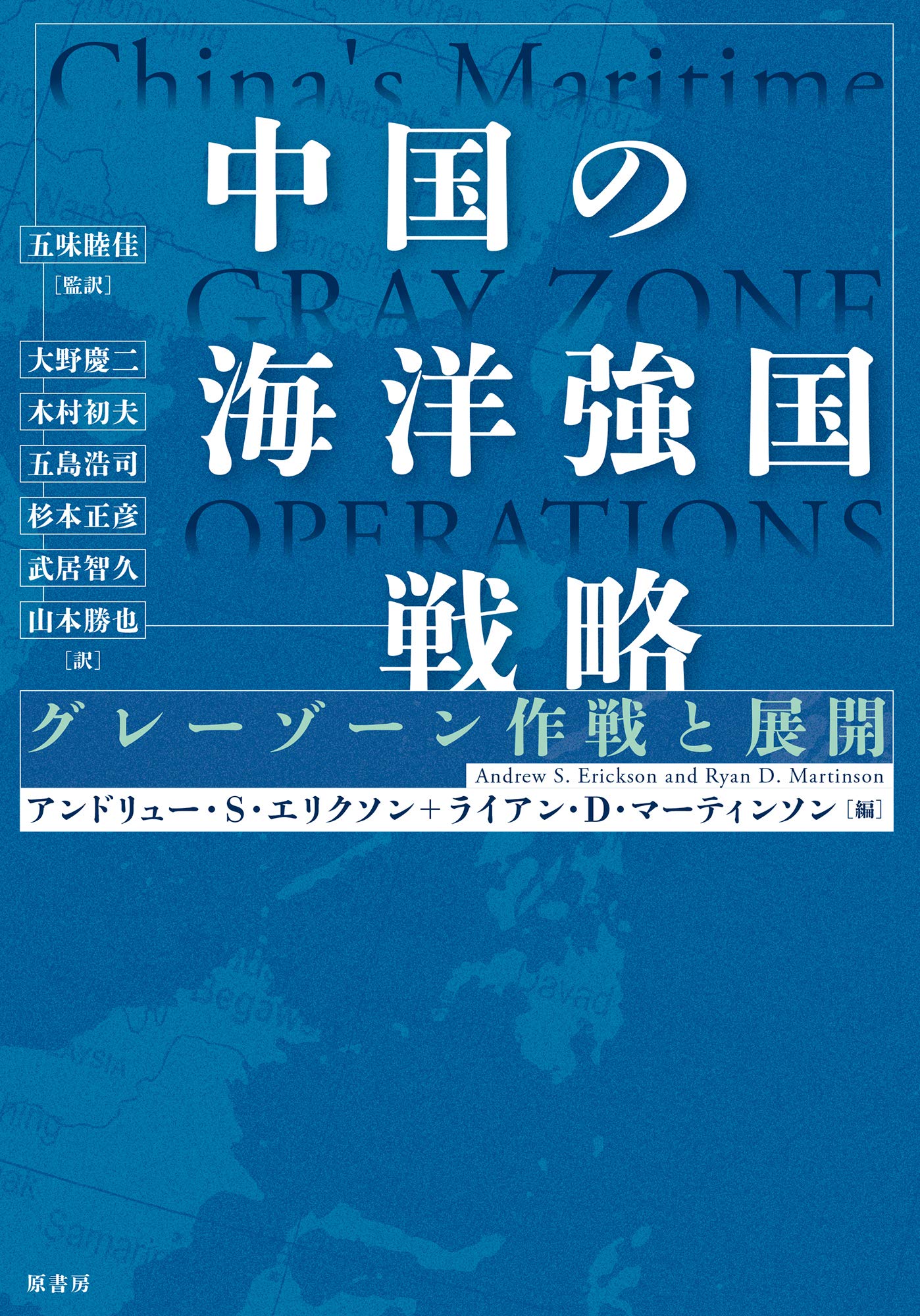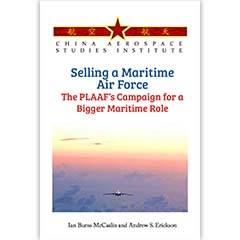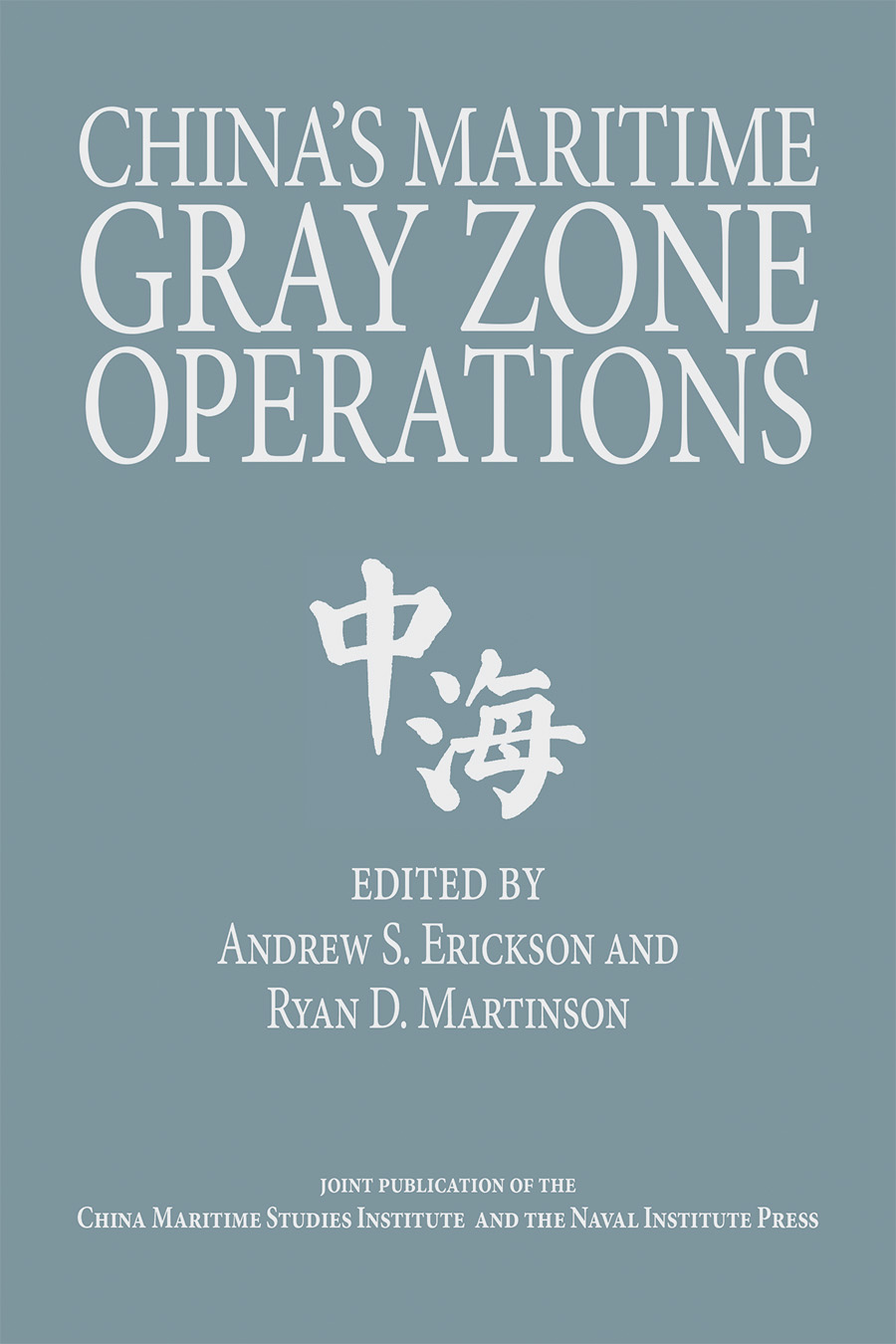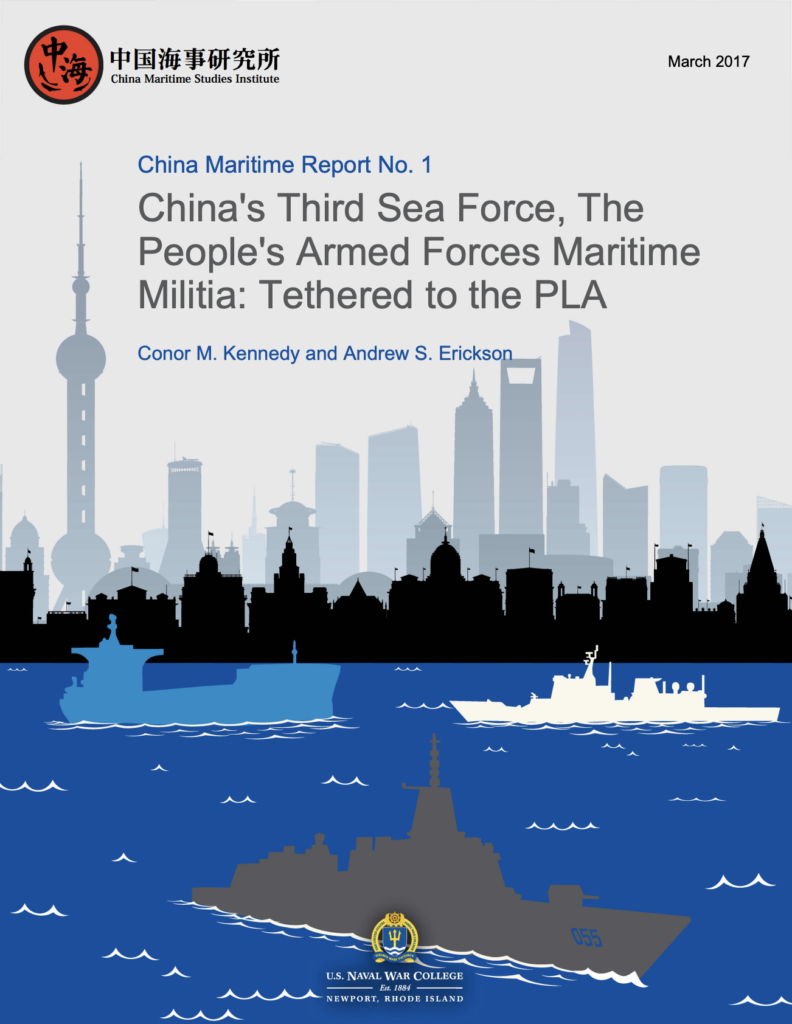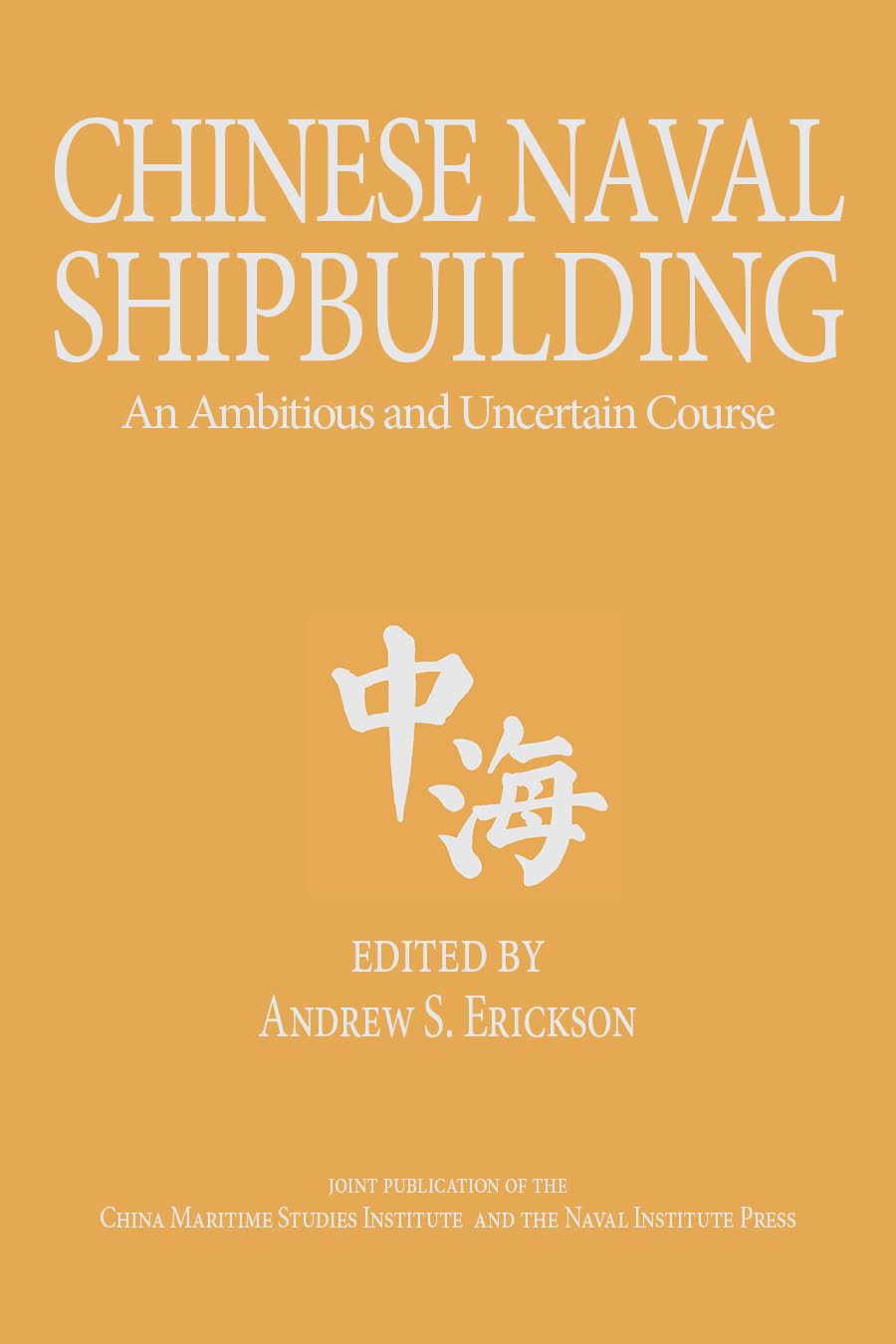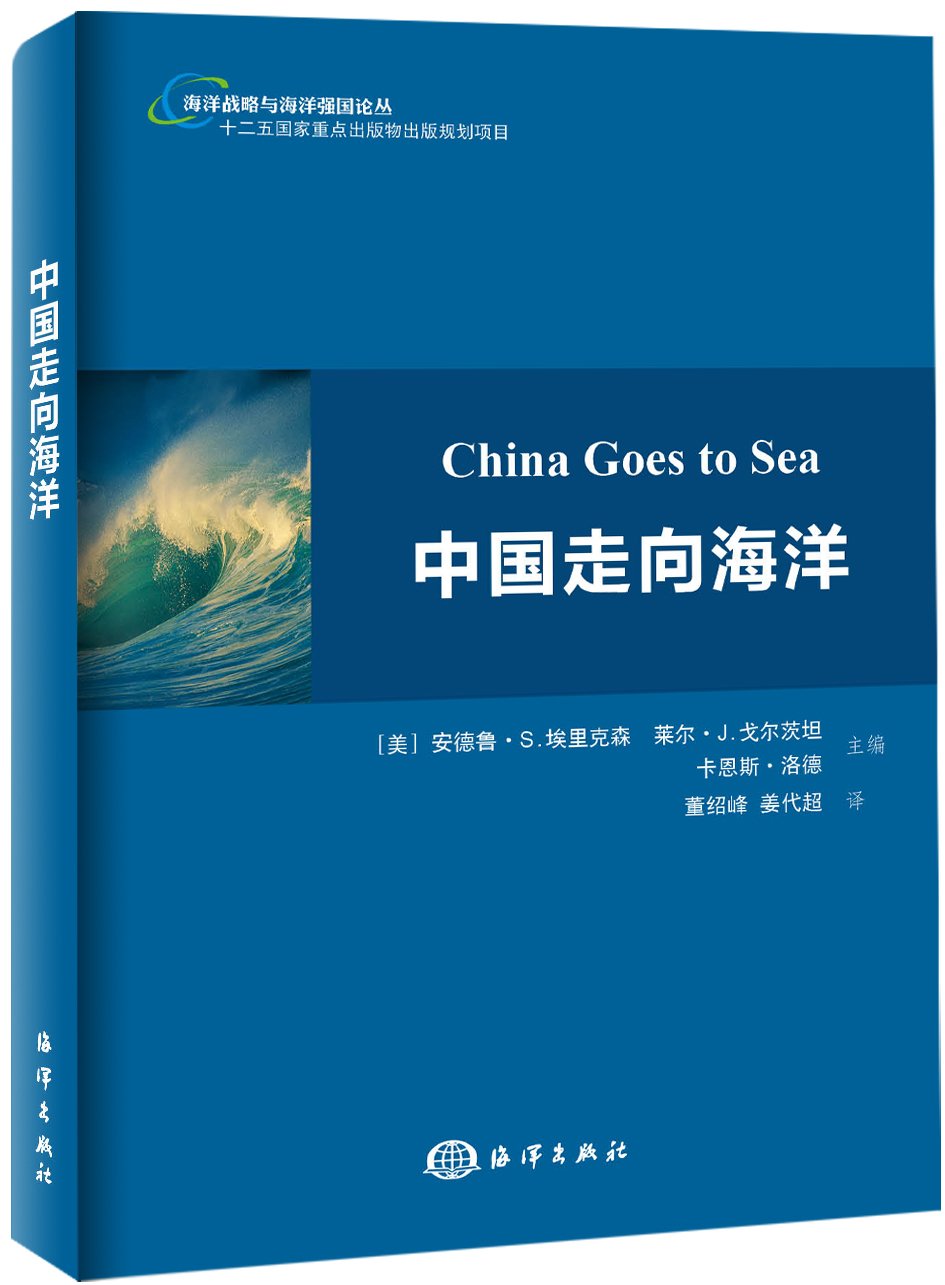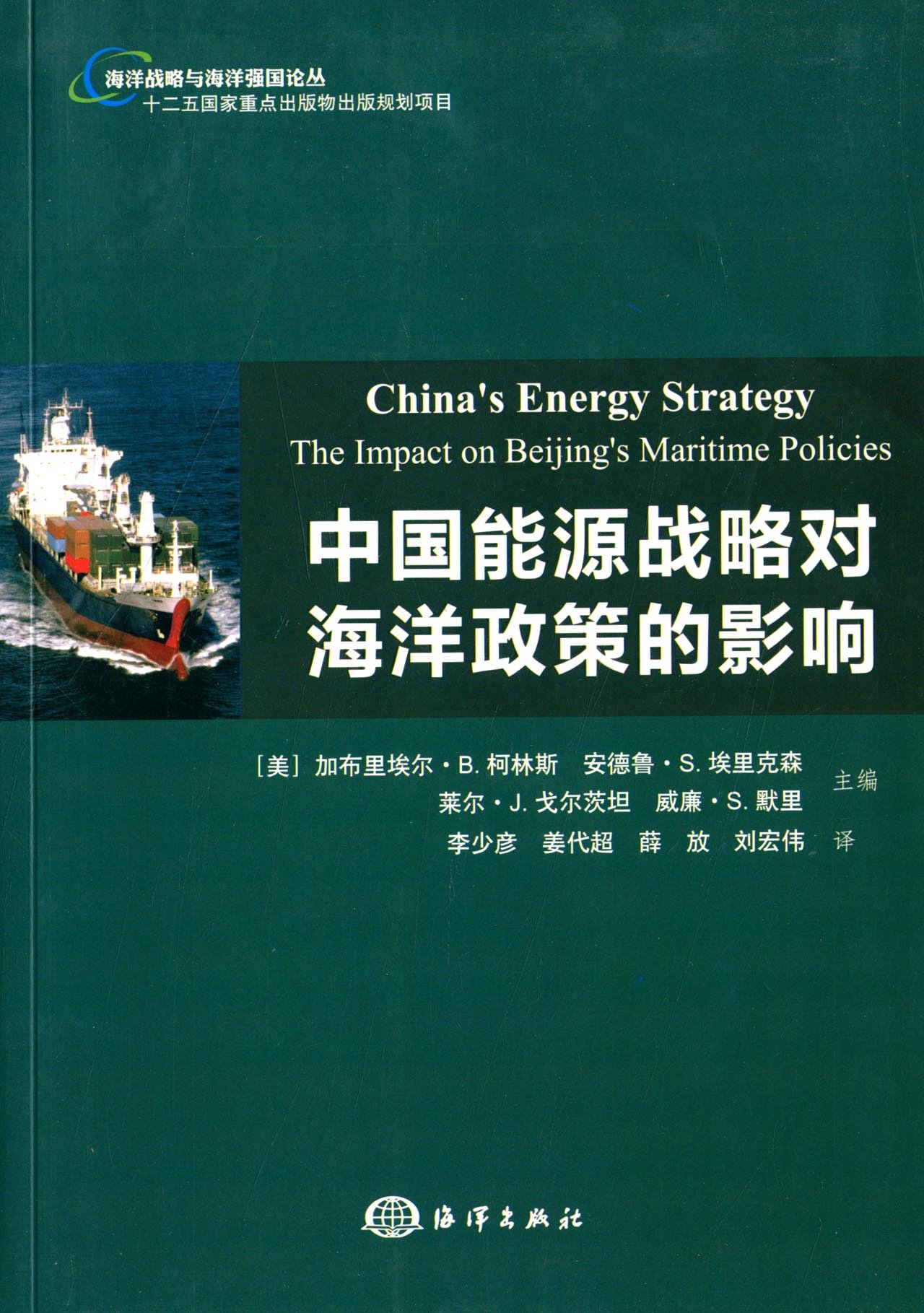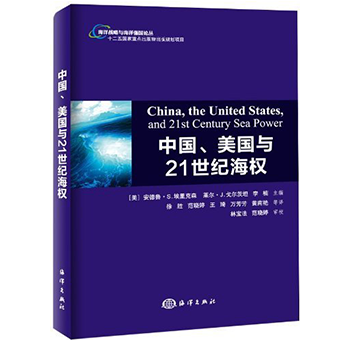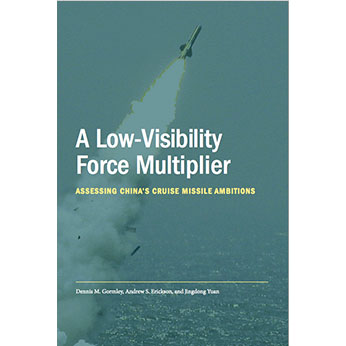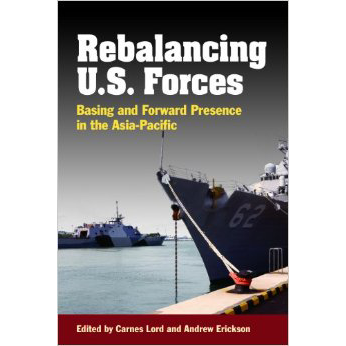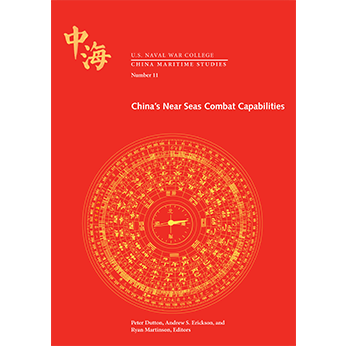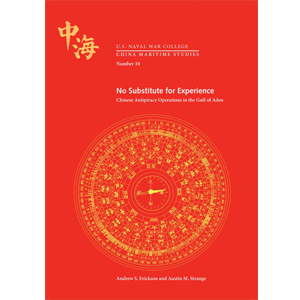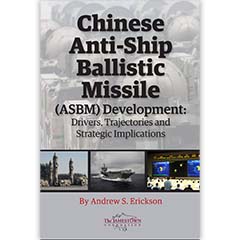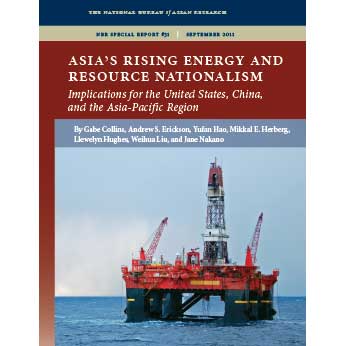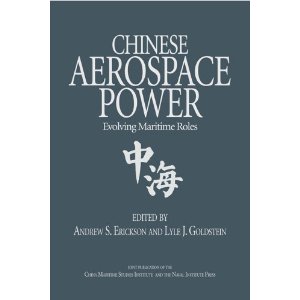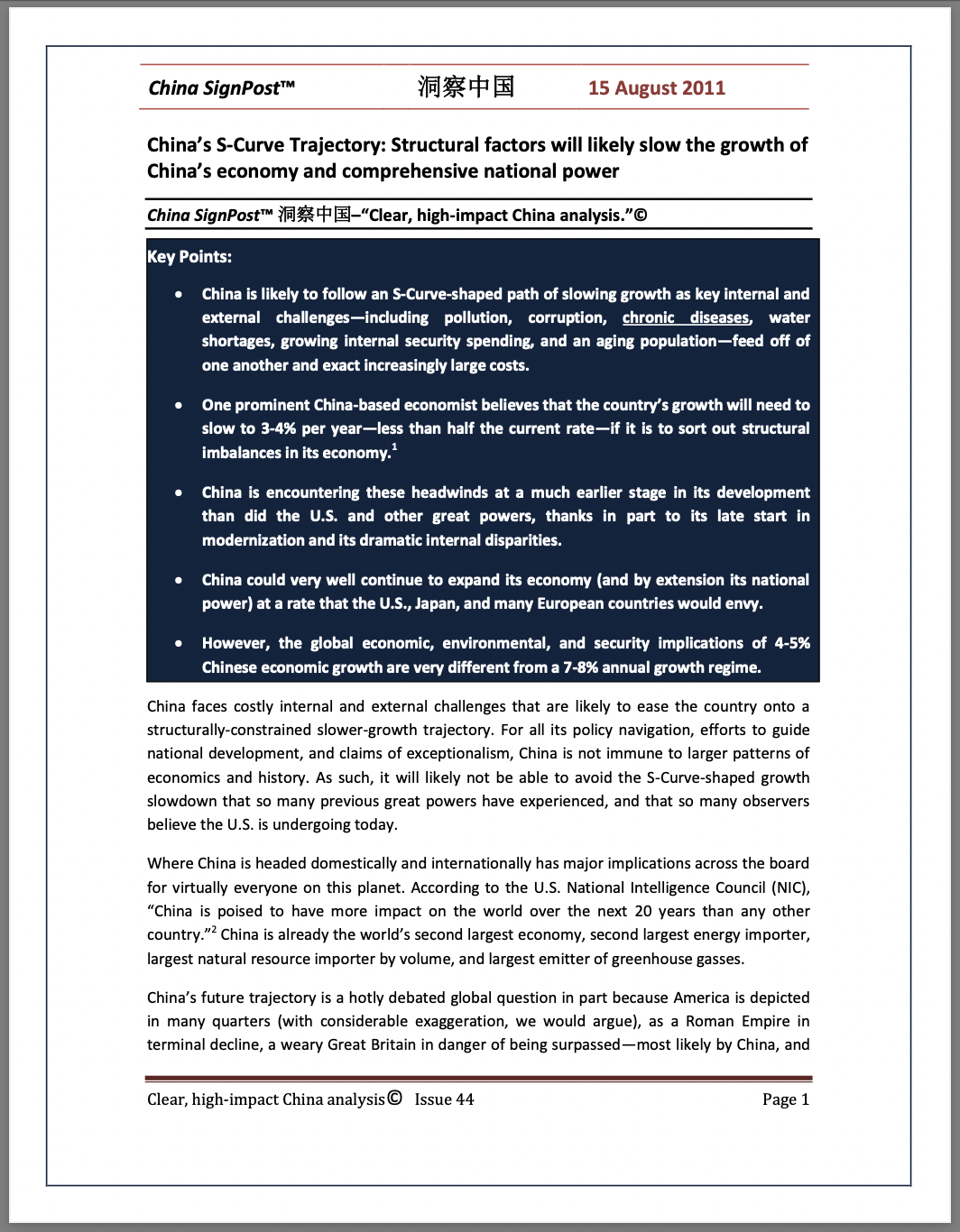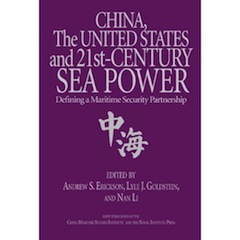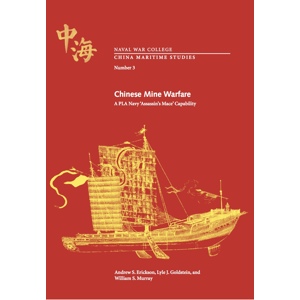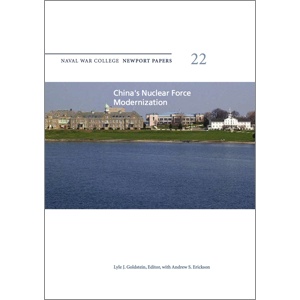China’s New Liaowang-1 Space Support Ship: Defensive & Offensive Capabilities from Sea to Satellites
Andrew S. Erickson, “China’s New Liaowang-1 Space Support Ship: Defensive and Offensive Capabilities from Sea to Satellites,” 19FortyFive, 8 May 2025.
Big splash! The People’s Republic of China (PRC) just fielded the world’s largest space support ship by far. Designed and built by China State Shipbuilding Corporation at Jiangnan Shipyard on Shanghai’s Changxing Island, Liaowang-1 (IMO 1063607) was launched and outfitted in 2023, passed extensive sea trials between 19 December 2024 and 23 January 2025, and was formally delivered and commissioned for operational service in mid-April 2025. Boasting large radomes and high-gain antennae, this 225-meter-long, 32-meter-wide behemoth displaces 30,000 tonnes and is operated by a crew of 400.
There’s a (purpose-built) ship for that… “Nowadays, fighting is not only about who has the harder fist, but more importantly, who has the brighter eyes and the faster brain,” enthuses one PRC source. “With the ‘clairvoyant’ [Liaowang-1/Observer-1/瞭望1号], our navy can find problems earlier and make better judgments.” This represents an effort not only to make shipbuilding virtue out of necessity from limited global ground stations, but also to double down on the perceived advantages of sea-based space operations support. China is betting big—and making a very different bet than the United States, which has the only other major space support fleet, but far fewer vessels.
Liaowang-1 initiates a new series, adding to the biggest “eyes and ears” yet as the next-generation successor to China’s existing fleet of progressively-improved Yuanwang ships. Yuanwang -1 and -2’s retirement and -4’s decommissioning left the fleet’s inventory at four, incentivizing a major new addition. Liaowang-1 surpasses its predecessors’ tracking and telemetering focus to achieve true multi-mission competence with additional robust functions as a space-monitoring command center and an early-warning sensor node integrated into a space defense network, with the possibility of additional space warfare capabilities. Whereas China formerly had only “space tracking ships,” it now also has a true “space event support ship.”
Status and Structure
Premier Zhou Enlai conceived the Yuanwang space tracking fleet program in 1965. Yuanwang-1 and -2, launched in 1977 and commissioned in 1980, supported China’s initial DF-5 ICBM flight test in 1980 and inaugural JL-1 submarine-launched ballistic missile (SLBM) test in 1988. In 1994, Yuanwang-2 performed unsuccessful but historic remote maintenance on the Dong Fang Hong 3-1 communications satellite stuck in sub-geostationary orbit. Today Yuanwangs “are equipped with advanced electronic equipment, sensors, and antennas that can assist in tracking satellite, rocket, and ICBM launches,” the Pentagon states. The latest and greatest, Yuanwang-7, was commissioned on 12 July 2016.
Although China’s Navy, Coast Guard, and Maritime Militia are the world’s numerically largest by far, beyond this China’s armed forces have additional components with other important vessels. PRC space support ships are currently operated by the People’s Liberation Army (PLA)’s space mission command, under the Aerospace Force (ASF). The ASF, established on 19 April 2024—the successor to the Strategic Support Force’s Space Systems Department, is itself the recipient of military units with space missions following Xi’s 2015 reforms. The ASF manages “nearly all PLA space operations, including space launch and support; space surveillance; space information support; space telemetry, tracking, and control; and space warfare,” explains the Pentagon.
The ASF’s China Launch and Tracking Control (CLTC) operates the Yuanwangs and Liaowang-1, in addition to 8+ bases, four domestic fixed launch sites (Jiuquan, Xichang, Taiyuan, and Wenchang), the similarly-missioned Xian Satellite Control Center and the Beijing Aerospace Control Center, and the PLA telemetry, tracking, and command (TT&C) system for all PRC satellites including overseas stations in Argentina, Namibia, Kenya, and Pakistan. Beijing has also pursued access to other strategic locations abroad, including in the Pacific. There has been media speculation that China will reestablish a space tracking station in Kiribati, where it had one on South Tarawa Island pre-2003. Liaowang-1 provides an important hedge against loss of these tracking stations (e.g., due to diplomatic restrictions during a crisis regarding Taiwan). China still has limited options for supporting satellites in certain orbits—especially in the southern hemisphere.
While China’s ground stations, coastal radars, and their coverage network have improved significantly, they remain limited in number and inherently constrained by geography and the Earth’s curvature. Major gaps and “blind spots” imposing blackouts in situational awareness and deep space communications would persist but for space support ships filling these holes as mobile space mission control extensions and integrators. Within ASF’s CLTC, the Yuanwangs and Liaowang-1 are operated by China Satellite Maritime Tracking and Control Department in Jiangyin on the Yangzi River in Wuxi, Jiangsu province. Established in 1978, this “Base 23” (MUCD 63680) also provides logistics, with the Yuanwang-21 and -22 cargo ships transporting launch vehicles (e.g., from assembly facilities in Tianjin) and other large rocket components to Wenchang on Hainan Island.
Space tracking ships pre-deploy downrange of space launches to monitor telemetry and relay data via robust communications suites; cover the orbital path of piloted spacecraft to maintain voice, video, and telemetry links; and collect data for post-mission analysis. They can issue telecommands, e.g., for course adjustments or stage separations for rockets and on-orbit maneuvers or contingency operations for satellites. Numerous missile tests, rocket launches, satellites orbited, and space missions including crewed spacecraft and space station module deployments keep space tracking ships busy. “The Yuanwangs have increased their operational tempo and range in recent years,” the Pentagon reports, “and, in 2023, set a record for days at sea.”
Yuanwangs may operate at sea for up to several months. They occasionally resupply or pay goodwill visits at foreign ports, sometimes generating controversy. Yuanwang-5’s 16-22 August 2022 call on Hambantota, Sri Lanka, for instance, triggered heated Indian opposition. Yuanwang-6’s approaching India’s Andaman and Nicobar Islands in early November prompted a delay in testing the BrahMos extended-range supersonic cruise missile nearby for fear of spying. While Yuanwangs have typically operated in the Pacific and Indian Oceans, in early 2020 Yuanwang-7 became first-in-fleet to conduct operations in the Atlantic Ocean. Liaowang-1’s significantly larger size than its seven Yuanwang predecessors offers improved seakeeping and stability; more room for crew and equipment, provisions and fuel; and thereby extended endurance.
While they are publicly credited with monitoring, supporting, and integrating China’s own crewed and uncrewed rockets and spacecraft as well as missiles and satellites, the dual-use capabilities of China’s space support ships are also directly applicable to monitoring and collecting electronic intelligence on, tracking, and cataloguing foreign launches and orbital systems for espionage and targeting. Any foreign visit aboard a Yuanwang or Liaowang-1 would doubtless bypass restricted areas with highly-sensitive equipment, data, and displays, operated by world-leading technicians.
PRC sources describe Liaowang-1 as a step-change in capabilities far exceeding Yuanwangs’ traditional telemetering portfolio. One article describes it as a multirole integrated maritime early-warning shipresponsible for broad-area airspace surveillance and missile warning that exceeds the previous global gold standard—the USNS Howard O. Lorenzen missile range instrumentation ship, harassed and surveilled by PRC Maritime Militia in 2014—considerably in size of vessel and radar array while comparing favorably in detection accuracy and systems integration. Another terms Liaowang-1 “a maneuverable maritime early-warning radar base” connected in real time with China’s space surveillance network and missile defense system. “When carrying out war zone-level alert missions,” it claims, the ship “can track 1,200 air targets simultaneously, rely on deep neural network algorithms to maintain an identification accuracy of more than 95% in electromagnetic interference and atmospheric disturbance environments, and ‘see through’ hypersonic weapons, ballistic missiles and stealth targets in complex environments.”
In addition to supporting kinetic anti-satellite (ASAT) capabilities indirectly by monitoring enemy targets and transmitting cueing information, Liaowang-1, with its tremendous onboard power provision via diesel generators, might conceivably test or deploy non-kinetic counterspace capabilities—such as laser dazzling or jamming—to confuse, disrupt, or disable spy or early-warning satellites passing overhead.
COMPARATIVE CONTEXT
China is the only nation besides the United States with multifarious global TT&C coverage, including a major space support fleet. The USSR/Russia used to be active in this area, but has retired its last support ship, likely due to funding challenges and non-global military priorities that can be supported terrestrially within its eleven time zones. “The Russian space program is deteriorating and its only activity in human spaceflight is for the International Space Station, which enjoys the infrastructure of the United States, including NASA’s constellation of Tracking and Data Relay Satellites in geosynchronous orbit,” observes space security expert Michael Listner. America’s Tracking and Data Relay Satellite System (TDRSS) “nullifies the need for ground tracking or sea-based systems to stay in communication with U.S. spacecraft.” America relies more heavily on satellite relay networks (e.g., TDRSS) and foreign ground stations, leaving China uniquely reliant on space support ships. Liaowang-1’s debut suggests Beijing has doubled down on this approach, with both pros and cons.
“In terms of capability and design philosophy, Liaowang-1 could be seen as China’s answer to the U.S. SBX-1 Sea-Based X-Band Radar, albeit deployed as a surface ship rather than a platform atop a semi-submersible rig,” assesses Argentine naval expert Roberto Lafforgue. “It also draws comparisons to Europe’s top intelligence-gathering vessels—but with amplified muscle. Imagine Norway’s FS Marjata, a purpose-built electronic intelligence (ELINT) ship operated by the Norwegian Intelligence Service, but on anabolic steroids and banned supplements.”
Advantages: China enjoys political autonomy, free access to the vast majority of the world’s oceans, reduced reliance on militarily-vulnerable fixed targets, and growing redundancy and robustness given its simultaneous investment in, and orbiting of, relay satellites. In wartime, space support ships could help service, control, and monitor PRC military satellites and maintain situational awareness even if PRC ground stations were damaged or otherwise disrupted.
Disadvantages: Maritime space support may be impeded by weather and obstacles to the ships themselves and the paths they must follow when tracking. Liaowang-1’s ungainly sensor suites give it an unusually high center of gravity, complicating stability in heavy seas. Ships are vulnerable to interference or even destruction in wartime; Liaowang-1 represents a particularly high-value target with huge, easily recognizable visuals and electromagnetic signature and no apparent defensive weapons systems aboard. When radiating—inherent in its operations—it would be easy to find and target. Operating such complex, sensitive equipment is challenging, requiring tremendous electrical power and operational sophistication at best. Noise, vibration, and interference plagued Yuanwang development, and pushing the performance parameters of sophisticated systems brings challenges even today. Equipment breaks down, and must be repaired or replaced even thousands of miles from home.
Liaowang-1’s relevance to China’s emerging Fractional Orbital Bombardment System (FOBS) capability may be more complex and contingent. “FOBS is an independent system like ICBMS,” Listner explains, “placed on a suborbital trajectory as opposed to a ballistic trajectory and delivering its warhead to its target. Liaowang-1 would likely not have a role as the FOBS would have its targeting information in its guidance system.” However, Liaowang-1 would be useful for testing China’s FOBS, for tracking it, and perhaps for collecting intelligence on how America tracks and responds to it. Presumably China can, and might, use existing systems to retarget its FOBS. This ship helps the PLA create a distributed kill chain, and is also likely helpful for the PRC’s space plane (akin to Boeing’s X-37).
Conclusion
China has come out big, and made a big bet. Liaowang-1 reflects the increasing fusion of naval and space operations in a way no other country manifests in such pronounced physical at-sea space architecture. In a secondary capacity, Liaowang-1 can cover critical holes remaining in China’s global C5ISRT network. It gives the PLA worldwide capabilities and hedges against any loss of its limited ground station footprint. The ship could also be useful for jamming downlinks near Taiwan or farther offshore. It manifests physically a rational approach for Beijing, based on its military goals, what is has to work with, and its relative strengths and weaknesses.
Continued PRC emphasis and improvement with regard to its space support ships will allow it to maintain greater communications with on-orbit assets, including China’s permanent space station and increasingly frequent crewed activity. “Notably, Beijing is deploying its own version of TDRSS,” with Tianlian II-05 launched on 27 April 2025, Listner emphasizes. “When fully deployed, China will enjoy capability similar to the U.S. TDRSS.” A PRC TDRSS would finally alleviate single-point reliance on space support ships.
Intended for integration within a C5ISRT system-of-systems multiplex, Liaowang-1 may “be deployed in the Arctic/northern hemisphere where China has feeble presence,” suggests geoint analyst Vinayak Bhat. “The arctic deployment will provide China a better BMD early warning capability that the PLA currently lacks regarding any missile fired from/over Greenland/Alaska.” It may also be used “to identify and track U.S. Space Force and/or Russian Space Forces trials in that field as readers/satellites may miss glide vehicles moving at hypersonic speeds without exhaust.” Liaowang-1 could also offer useful coverage in the southern hemisphere, although this would cede its greatest air and missile warning utility.
Liaowang-1 is thus inexorably enmeshed in China’s struggles to achieve data fusion over confusion amid seemingly endless datapoints and unforgiving real-time demands. While China has its work cut out for it, the key takeaway for Washington and its allies and partners should be the seriousness and rapidity with which Beijing is building capabilities across the board, and the options that the world’s largest, most dynamic shipbuilding industry affords it in doing so.
Watch this space for more purpose-built ships to come.
About the Author: Dr. Andrew S. Erickson
Dr. Andrew S. Erickson is Professor of Strategy in the U.S. Naval War College (NWC)’s China Maritime Studies Institute (CMSI). A core founding member, he helped establish CMSI and stand it up officially in 2006, and has played an integral role in its development; from 2021–23 he served as Research Director. Erickson is currently a Visiting Scholar at Harvard University’s John King Fairbank Center for Chinese Studies, where he has been an Associate in Research since 2008. He has received the Navy Superior Civilian Service Medal, NWC’s inaugural Civilian Faculty Research Excellence Award, and NBR’s inaugural Ellis Joffe Prize for PLA Studies. He blogs at www.andrewerickson.com.




